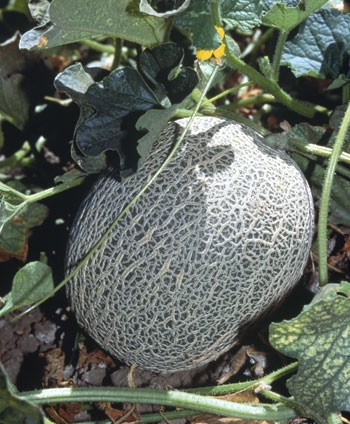Posts Tagged: glassy winged sharpshooter
Glassy-winged sharpshooter a continuing threat to grape industry
Anaheim boasted a thriving wine industry in the late 1800s, before an unnamed affliction killed 40,000 acres of the grapevines and put 50 wineries out of business. The problem was later found to have been Pierce’s disease of grapevines. Would Anaheim be wine country today if it weren’t for Pierce’s disease? Probably not, but the sad fate of this Southern California wine industry underscores the importance of controlling the disease and the insects that spread it in California’s thriving grape growing regions.

GWSS has turned out to be a very efficient vector of Xyella fastidiosa, the bacterium that causes Pierce’s disease in grapes. When GWSS made their way to places where scientists believed the bacterium didn’t exist, such as Kern County, grapevines began to express symptoms of the disease. The county agricultural commissioners in the San Joaquin Valley have been working tirelessly over the last 10 years to keep glassy-winged sharpshooters out of grape growing regions to protect a very valuable economic driver. In Fresno County alone, where grapes are the No. 1 agricultural commodity, the crop was worth $961 million in 2011.
Despite the efforts to contain GWSS in Fresno County, the pest is spreading very gradually south and east of the Fresno-Clovis metropolitan area into commercial vineyards and orchards.
“Cooperation by urban residents where we find GWSS has been great,” said Fred Rinder of the Fresno County Agricultural Commissioner’s office. Nevertheless, in 2012, GWSS was found spreading out in Kerman, Parlier, Sanger and Kingsburg.
Stephen Vasquez, UC Cooperative Extension advisor in Fresno County, fears local grape farmers have become complacent about glassy-winged sharpshooter and Pierce’s disease, even though all grapes are susceptible. The best way to control its spread, he said, is to monitor and manage sharpshooter vectors and remove and replace vines that have tested positive for Xylella fastidiosa.
“Be vigilant. Learn the symptoms and train crews and workers,” Vasquez said. “Pierce’s disease has been around for a long time and GWSS has been here more than a decade, but we still haven’t had that marriage of the two. That is potentially devastating.”
The UC IPM website has extension information on glassy-winged sharpshooter and Pierce’s disease.
Sonoma County grape growers face a triple threat

“Invasive pests are a problem,” said Nick Frey, president of the Sonoma County Winegrape Commission. “They threaten California agriculture in general, and probably our ecology too, so it’s important to try to prevent their import into the state, and if they do get here, to detect them early. If you don’t get early detection, your odds of eradication are low.”
Rhonda Smith, UC Cooperative Extension advisor in Sonoma County, said local citizens also need to understand and comply with rules to prevent the introduction and spread of invasive species.
“The bottom line is, follow the rules,” Smith said, “because ultimately, the result is pretty dramatic. And who pays the price for that? We pay the price for the enormous effort to eradicate something once it’s here, and/or, we completely lose that industry. We then begin to eat more fruits and vegetables we don’t grow here in California.”
'Two-way learning' embraced
Tim Hearden, Capital Press
Rick Buchner, UC Cooperative Extension advisor in Tehama County, was featured as a "Western Innovator" in a Capital Press story published yesterday. In the article, he explained how the UCCE two-way learning model - involving UC academics and farmers - has been successful in solving agricultural problems.
"The beauty of extension is that we all learn together," Buchner said. "The growers know things that I don't, and I hopefully can share things from the university that they don't know. When we work together, it's a pretty powerful team."
Colorado cantaloupe listeria outbreak affects California growers

This would normally be the season when farmers plan the summer crop that in good years is valued at nearly $200 million, according to the California Cantaloupe Advisory Board. Instead, they are cutting acreage and scrambling for ways to reassure a nervous public that cantaloupes are safe to eat.
This month the UC Center for Produce Safety will host a closed-door symposium in San Diego for cantaloupe growers, shippers, agricultural researchers, government regulators and others to create guidelines for best growing practices.
"The main question will be, 'What are the gaps in our knowledge?'" said Bonnie Fernandez-Fenaroli, executive director of the UC Davis-based center. "Do we need to do research or is it a matter of the cantaloupe industry implementing and enforcing best practices?"
UCCE director in Tulare County takes Kings County reins
Lewis Griswald, Fresno Bee News Blog
Tulare County UC Cooperative Extension Director Jim Sullins will also be director of the Kings County UCCE office. Longtime Kings County UCCE director and 4-H youth advisor Peggy Gregory retired at the end of the year. She served 37 years with the University, including 20 in Kings County.
Grape growers fend off thieves, pests
Fresno Business Journal
Pests and thieves can cost grape growers a great deal of money and headaches. That’s why the two issues were addressed along with other important topics at the UC Cooperative Extension San Joaquin Valley Grape Symposium held Wednesday in Easton.
UCCE viticulture farm advisor Stephen Vasquez gave an update on glassy-winged sharpshooters and Pierce's disease. He said that recent catches of sharpshooters are concerning since they have been found near a major riparian corridor that has had a historically low level of Pierce’s disease.
ANR in the news during winter break
While many offices are closed between Christmas and New Year's Day, the media don't stop distributing news. Following is a sampling of recent news stories with an ANR connection.
In battle to save Bonny Doon vineyards, scientists try tricking bacteria
Beth Mole, Santa Cruz Sentinel

But to stop these microscopic killers, scientists had to do some criminal profiling.
When Xylella get into a grape vine, they're released in the vascular tissue -- the plumbing of the plant that pumps water up from the roots. From there, the bacteria use the tissue as "hallways" to invade the whole vine. They then start exploring and munching on the plant.
"We think that the exploratory phase involves rather promiscuous movement of bacteria," Lindow said. But as they spread from place to place, there are only a few bacteria in each area, he said.
Each bacterium constantly sends out a molecular beacon that allows them to collect. Lindow and his team of researchers realized that this beacon is the bacteria's glaring weakness -- without it, they wouldn't make it into their next sharpshooter or kill the vine. So, the researchers engineered transgenic grapevines to make the same beacon.
Pesticide use rises throughout Merced County
Joshua Emerson Smith, Merced Sun-Star
Pesticide use in Merced County is on the rise, according to the annual report from the California Department of Pesticide Regulation. The bump followed a statewide trend that saw an increase in pesticide use after four years of decline.
The reporter talked to Paul Towers, a spokesperson for the Pesticide Action Network, who said, "California is stuck on a pesticide treadmill."
UC Cooperative Extension farm advisor Maxwell Norton said the idea that alternatives to pesticides aren't being pursued is false.
"Pest management has more resources dedicated to it than any other field of agriculture research," he said. "Agricultural researchers are putting a lot of resources into alternative systems. The research reports are there in the hundreds for people to read. We will eventually come up with alternatives."
Leaf curl dilemma
Debbie Arrington, The Sacramento Bee
Folks with backyard peach or nectarine trees face a major problem this winter. Used to control leaf curl, Micro-cop copper fungicide spray and lime sulfur no longer are available to California home gardeners due to environmental concerns. The fungicide sprays that are available have much lower concentrations of copper.
"It's a pretty big deal right now," said Chuck Ingels, Sacramento County UC Cooperative Extension's horticulture advisor. "Those products worked. We don't really have an alternative yet."
This month, Ingels and master gardeners are conducting tests on possible alternatives, such as Liqui-Cop and Concern copper soap, at the Fair Oaks Horticulture Center's orchard. Because the fungus needs water to multiply, they're also testing another approach: Covering whole trees with breathable fabric to prevent moisture from accumulating on the branches.
"Until we know what works, the best option is to plant varieties that are resistant to leaf curl," Ingels said.
Olive oil's secret: Not enough real virgins
Ronald Holden, Crosscut.com
In a report a year ago, UC Davis researchers found that 69 percent of imported "extra virgin" olive oil (and 10 percent of domestic oil) wasn't what it pretended to be. Even the best-known brands showed signs of adulteration —blended with inferior grades of olive oil or cheaper oils from soybeans, hazelnuts, and sunflower seeds.
The lone import to receive top ratings on all points was Costco's Organic Extra Virgin Oil, which sells for one-fifth the price of competing brands.